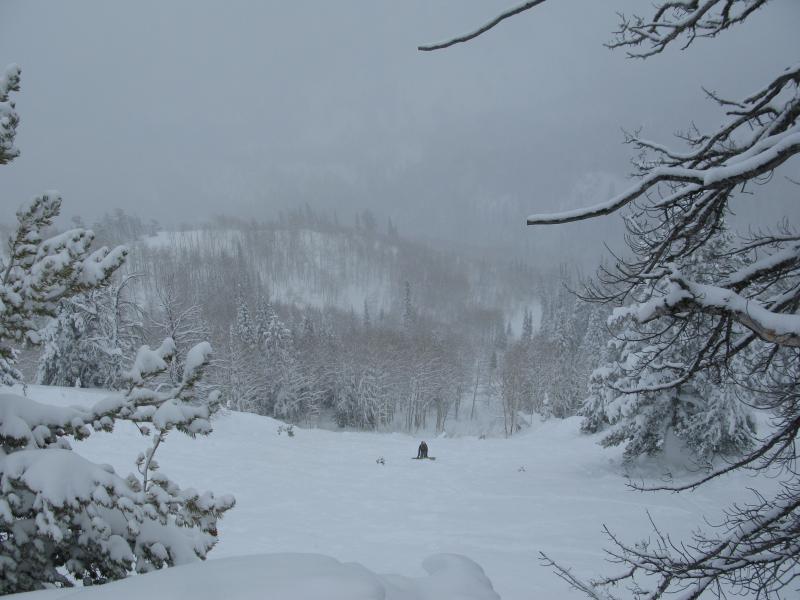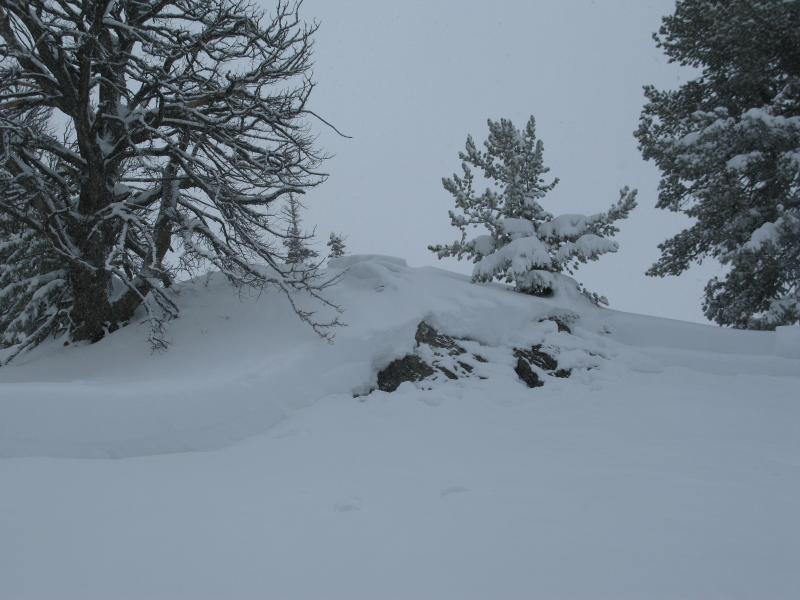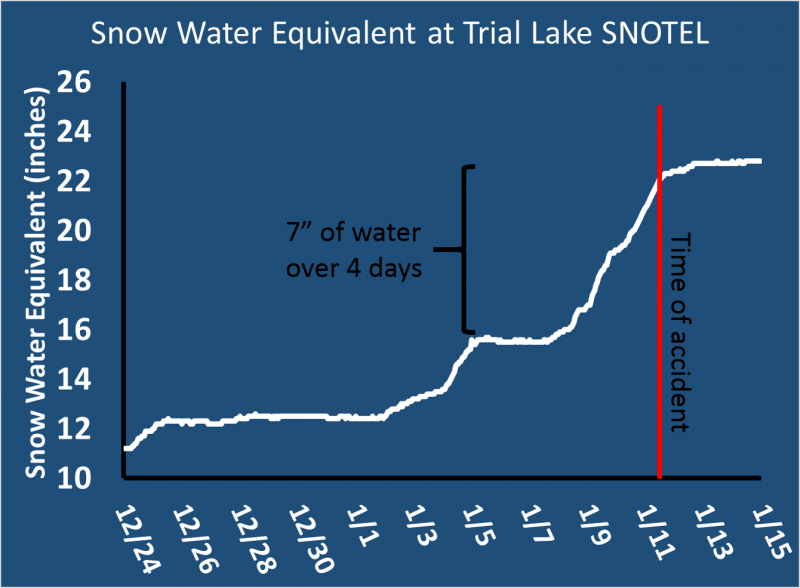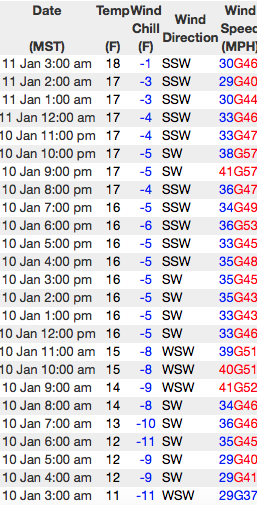Eleven snowboarders rented a private snowcat with the intent of riding in backcountry terrain. After a morning of riding a few laps without any signs of instability, the group decided to push it a little higher in elevation and further to the south. When they got to their new location, they began to assess the slope. The group was divided in their feelings about the slope, particularly because it was a little steeper. With this in mind, they positioned a few riders in safe locations in case of an avalanche.
One rider (it is unknown whether he was the first on the slope or not) decided to jump off a small cliff at the top of the hill. Upon landing, he triggered the avalanche, catching him and one other rider from the group. One of the riders suffered tibia and fibula fractures from hitting trees on the way down the slope, while the other rider was fully buried. Unfortunately, the rider who was fully buried had turned his beacon off earlier in the day because of low batteries. After the dust cleared, the other group members quickly realized that one person was buried. They desperately searched the avalanche debris, and were unable to find a transceiver signal. Eventually, they saw a board sticking out of the snow; the buried rider had decided to pow-surf the run, rather than snowboard. The group was able to use his leash to find him beneath the snow and dig him out quickly. The buried rider didn’t suffer any injuries.
The crew helped the injured rider down the mountain and into the snowcat, which immediately took off towards the trailhead. Around 5:00 pm, the snowcat was approximately 2.3 miles from the trailhead when it suddenly broke down. They had no cellphone service and could not get the snowcat working properly, so two members of the group ran 2.3 miles back to the Smith Moorehouse trailhead, got in their trucks, and drove to Kamas where they notified Search & Rescue. A medical helicopter was then dispatched and the injured rider was airlifted to the hospital.



 Wow... a truly remarkable amount of water weight was added to our snowpack. No matter how strong the existing pack was, even the slightest weakness will reveal its cards under this kind of load.
Wow... a truly remarkable amount of water weight was added to our snowpack. No matter how strong the existing pack was, even the slightest weakness will reveal its cards under this kind of load.

Wind data from nearby Windy Peak clearly shows the perfect pattern for creating a dense, cohesive, and well connected slab.
 Avalanche danger for the day of the accident.
Avalanche danger for the day of the accident.
The image below is a snow-pit profile done at the crown of the avalanche. We found that the avalanche failed on a thin layer of faceted snow that was sitting just above a crust in the mid-portion of the snowpack.







